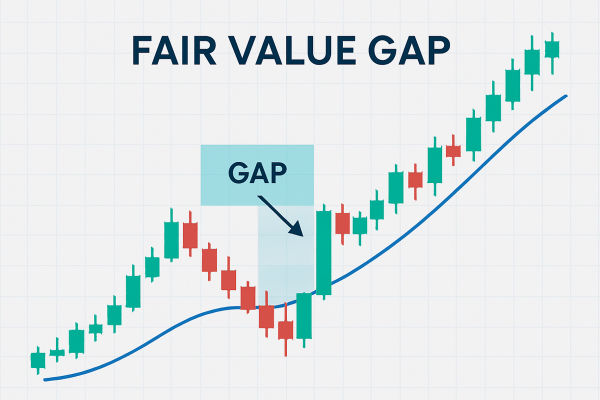The Canadian economy is deeply integrated with global markets, with exports playing a crucial role in its overall growth. Factors such as trade policies, commodity prices (especially oil), and monetary policy decisions significantly influence the canadian dollar (CAD). Previous U.S. trade policies, particularly under President Donald Trump, significantly impacted the Canadian economy and the CAD.
Canada’s economy is also sensitive to changes in U.S. trade relations, given that the U.S. is its largest trading partner. Economic indicators such as GDP growth, inflation, and employment rates help determine the strength of the CAD.
USD to CAD Exchange Rate Forecast

Currency exchange rate movements are influenced by interest rate differentials, global economic trends, and investor sentiment. While short-term forecasts indicate fluctuations, long-term projections depend on broader economic policies and trends.
The CAD to USD exchange rate is projected to fluctuate, with recent forecasts suggesting moderate appreciation over the next few months, pending economic data and central bank decisions. Comparing the projected future prices with the current price of the CAD/USD currency pair, analysts expect a gradual increase in value.
Forecasts indicate that CAD may experience periodic volatility due to trade policy changes and macroeconomic factors. The USD forecast for various timeframes, including today, this week, next month, and further into the future, suggests that the value of Canadian Dollars against the USD will be influenced by these factors.
Investors should monitor interest rate decisions by the Bank of Canada (BoC) and the U.S. Federal Reserve, as these directly impact CAD/USD movements.
Short-Term and Long-Term Projections
The Canadian dollar’s short-term and long-term projections are closely tied to the country’s economic performance, trade relationships, and global market trends. In the short term, the CAD is expected to remain volatile due to ongoing trade tensions between the US and Canada, as well as the lingering effects of the COVID-19 pandemic on the global economy. These factors contribute to uncertainty, causing fluctuations in the CAD’s value.
Looking ahead to the long term, the CAD is projected to strengthen as the Canadian economy gradually recovers from the pandemic. Improved trade relationships with the US and other countries will also play a significant role in bolstering the CAD. Additionally, the Bank of Canada’s monetary policy decisions, including potential interest rate changes, will be crucial in shaping the CAD’s long-term trajectory. As the economy stabilises and grows, the Canadian dollar is likely to reflect this positive momentum.
Tariffs and Trade Impact on the Canadian Dollar
Trade policies, including tariffs and trade agreements, significantly impact the CAD. Key considerations include:
USMCA (United States-Mexico-Canada Agreement) – Any amendments or disputes could affect the value of the Canadian dollar.
Commodity Exports – Canada is a major exporter of oil, and fluctuations in oil prices often correlate with CAD movements.
Supply Chain Disruptions – Global trade uncertainties and protectionist policies may introduce risks to currency stability.
Exchange Rates – Trade policies and tariffs can affect exchange rates between the CAD and other currencies, influencing the overall economic landscape.
Interest Rates and Monetary Policy

The Bank of Canada (BoC) plays a vital role in shaping the value of the CAD through its interest rate policies.
Higher interest rates typically strengthen CAD by attracting foreign investment. For instance, if the Bank of Canada raises interest rates while the Federal Reserve holds steady, CAD may appreciate against USD.
The BoC has signalled a data-dependent approach, adjusting policies in response to inflation and economic conditions.
Analysts anticipate potential rate cuts or hikes based on inflation trends and labour market performance.
The information provided here is for informational purposes only and should not be considered financial or investment advice. Always seek independent professional consultation before making any investment decisions.
Technical Analysis and Sentiment
Technical indicators help traders gauge market sentiment and predict potential price movements.
Support and Resistance Levels: The CAD/USD pair often reacts to key technical levels that traders watch closely.
Moving Averages: The 50-day and 200-day Simple Moving Averages (SMA) are commonly used to assess trends.
Relative Strength Index (RSI): This momentum indicator helps identify overbought or oversold conditions.
Global Economic Trends and Their Impact on CAD
Canada’s economy is influenced by:
U.S. Economic Performance: Strong U.S. growth typically benefits CAD due to increased trade.
China’s Demand for Commodities: As a major trading partner, China's economic shifts impact commodity prices and, consequently, CAD.
Geopolitical Events: Global conflicts, trade wars, and economic sanctions can drive volatility in the currency market.
US Economic Outlook and Its Influence on CAD
The U.S. dollar (USD) is a dominant force in global markets, and its fluctuations directly impact CAD. Key trends to watch include:
Federal Reserve Interest Rate Policy: If the Fed raises rates, CAD could weaken due to a stronger USD.
Inflation and Employment Data: These factors influence Fed decisions, shaping USD/CAD trends.
Market Risk Appetite: In times of uncertainty, investors may favour USD over CAD as a safe-haven currency.
Canadian Dollar Forecast for 2025
Forecasting currency movements involves assessing macroeconomic trends and technical indicators. While exact predictions vary, key expectations include:
Short-term Outlook (Next 6 Months): CAD/USD is expected to show moderate fluctuations, influenced by central bank decisions and economic data.
Medium-Term (2025): The exchange rate will depend on interest rate differentials, economic recovery, and trade policies.
Long-Term (2030): While some projections suggest CAD could appreciate, long-term forecasts remain speculative due to evolving global economic conditions.
Key Trends and Opportunities
Several key trends and opportunities are expected to shape the Canadian dollar market in the coming years. These include:
Trade Agreements: The USMCA (United States-Mexico-Canada Agreement) and other trade agreements will continue to impact the CAD’s value and volatility. Any changes or disputes within these agreements can lead to significant currency movements.
Oil Prices: As a major oil exporter, Canada’s economy is heavily influenced by oil prices. Fluctuations in oil prices will continue to impact the CAD’s value, with higher prices generally supporting a stronger Canadian dollar.
Interest Rates: The Bank of Canada’s interest rate decisions will influence the CAD’s value and attractiveness to investors. Higher interest rates typically attract foreign investment, strengthening the CAD.
Consumer Spending: Consumer spending is a key driver of the Canadian economy. Changes in consumer behaviour, influenced by factors such as employment rates and inflation, will impact the CAD’s value.
Global Economic Trends: The CAD will be influenced by global economic trends, including the performance of the US economy and the ongoing impact of COVID-19 on global trade. Strong economic performance in the US, for example, can boost Canadian exports, supporting the CAD.
Managing Risks in Currency Trading
For traders and investors dealing with CAD/USD:
Hedging Strategies: Businesses engaged in international trade may use currency hedging to mitigate risk.
Diversification: Holding assets in multiple currencies can reduce exposure to single-currency fluctuations.
Monitoring Economic Indicators: Monitoring reports from the Bank of Canada and the Federal Reserve helps predict CAD/USD trends.
The information provided in this article is for informational and educational purposes only and should not be relied upon for specific legal, investment, or tax advice.
Navigating the Canadian Dollar Market

Navigating the Canadian dollar market requires a deep understanding of the factors that influence the CAD’s value and volatility. Investors and businesses can use various tools and strategies to manage their exposure to the CAD, including:
Forex Hedging: Hedging strategies can help mitigate the risks associated with CAD fluctuations. By using financial instruments such as futures and options, businesses can protect themselves against adverse currency movements.
Currency Forecasting: Accurate currency forecasting can help investors and businesses make informed decisions about their CAD exposure. By analysing economic indicators and market trends, they can anticipate potential currency movements.
Diversification: Diversifying investments and revenue streams can help reduce exposure to CAD fluctuations. By holding assets in multiple currencies, investors can spread their risk and protect against currency volatility.
Risk Management: Implementing effective risk management strategies can help mitigate the risks associated with CAD volatility. This includes setting stop-loss orders, regularly reviewing currency positions, and staying informed about economic developments.
By understanding the key trends and opportunities shaping the Canadian dollar market, investors and businesses can make informed decisions about their CAD exposure and navigate the market with confidence.
Conclusion
The Canadian dollar’s outlook for 2025 is shaped by various factors, including interest rates, trade policies, and global economic trends. While short-term volatility is expected, understanding market drivers can help traders and investors make informed decisions. As always, currency markets are dynamic, requiring continuous monitoring of economic indicators and policy shifts.
Disclaimer: This material is for general information purposes only and is not intended as (and should not be considered to be) financial, investment or other advice on which reliance should be placed. No opinion given in the material constitutes a recommendation by EBC or the author that any particular investment, security, transaction or investment strategy is suitable for any specific person.









